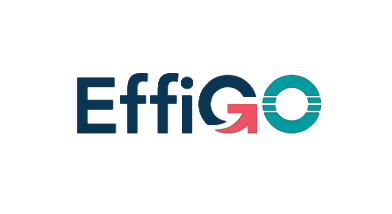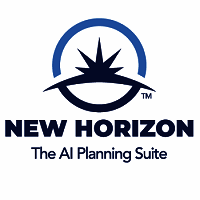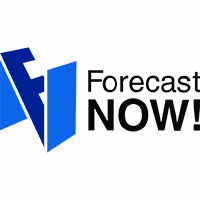What Is Supply Chain Planning Software?
Supply chain planning software, or SCP software, is a sophisticated tool that helps firms streamline and optimize their supply chain operations. It helps manage critical components of the supply chain, such as demand forecasts, inventory levels, production planning, transportation, and so on. At its foundation, supply chain planning software use powerful algorithms and analytical tools to collect and evaluate data from numerous sources throughout the supply chain.
This allows firms to make more informed decisions and anticipate future disruptions, resulting in efficient and effective supply chain management. One of the primary advantages of employing supply chain planning software is its capacity to provide real-time visibility and control across the whole supply chain. This means that organizations may watch inventory levels, analyze sales and demand trends, and adapt their supply chain procedures in real time to changing market conditions.
Furthermore, supply chain planning software enables seamless cooperation and communication across various departments and stakeholders involved in the supply chain. This leads to enhanced synchronization, faster decision-making, and overall higher performance. When choosing supply chain planning software, it is critical to evaluate its features and functionality, such as forecasting, inventory optimization, supply chain risk management, and interaction with other systems.
It should also be scalable and adjustable to match the unique requirements of your company. Finally, investing in the correct supply chain planning software may improve productivity, save costs, and increase customer happiness, making it an essential tool for firms seeking to remain competitive in today's fast-paced industry.
What Are The Recent Trends In Supply Chain Planning Software?
Supply chain planning software has evolved significantly in recent years, thanks to technological developments and a rising emphasis on streamlining procedures and enhancing efficiency. As a buyer, you must stay current on industry developments in order to make an informed decision on which software to invest in.
Here are some recent advancements in supply chain planning software that you should consider:
1. Real-Time Data Analytics: One of the most significant trends in supply chain planning software is the use of real-time data analytics. This enables businesses to make faster and more accurate decisions using the most up-to-date information. Real-time analytics enables firms to identify and address possible supply chain issues before they become big problems, resulting in increased operational efficiency.
2. Machine Learning And Artificial Intelligence: Another growing trend in supply chain planning software is the use of machine learning and artificial intelligence (AI). These technologies can help firms enhance their supply chain operations by analyzing massive volumes of data and discovering patterns and trends that humans would struggle to detect.
3. Cloud-Based Solutions: The popularity of cloud-based supply chain planning software has grown in recent years. Companies using cloud-based solutions may access their supply chain data and tools from anywhere, at any time, making collaboration and decision-making more efficient and seamless. This eliminates the requirement for costly on-premise IT infrastructure.
4. Focus On Sustainability: As people become more aware of environmental issues, many firms are prioritizing sustainability in their supply chains. As a result, supply chain planning software suppliers are adding features and capabilities to assist businesses track and minimize their carbon footprint, streamline transportation routes, and reduce waste.
5. Integration With Other Systems: In today's fast-paced business world, firms need software solutions that can work smoothly with their existing systems. This is true for supply chain planning tools as well. Many suppliers also offer connectivity with other systems, such as ERP, CRM, and transportation management systems, to build a more comprehensive and simplified supply chain management workflow.
Buyers may make an informed decision about which supply chain planning software best suits their business needs and goals by staying up to date on the latest trends in the industry. Consider these tendencies while comparing software options and select the one that best meets your organization's specific needs.
Benefits Of Using Supply Chain Planning Software
Supply chain planning software is a strong tool that allows organizations of all sizes to successfully manage their supply chain operations. Its extensive features and capabilities simplify the process of planning, sourcing, manufacturing, and delivering goods or services to clients.
Let's explore, we'll go over the advantages of using supply chain planning software, allowing you to make an informed decision when selecting the best option for your organization.
1. Improved Planning And Forecasting: One of the most significant advantages of adopting supply chain planning software is the potential to improve planning and forecasting. This program uses historical data, industry patterns, and demand projections to reliably estimate future demand, allowing firms to make better educated decisions. This results in better inventory management, fewer stockouts, and higher customer satisfaction.
2. Increased Efficiency And Productivity: Supply chain planning software improves efficiency and productivity by automating key supply chain operations like procurement, inventory management, and logistics. As a result, firms get a competitive advantage in the market by saving money and completing orders more quickly.
3. Cost Reduction: Effective supply chain management can have a major impact on a company's bottom line. Supply chain planning software streamlines the sourcing, production, and distribution processes, resulting in cost reductions in inventory, transportation, and labor. It also aids in the detection of waste and inefficiency, allowing firms to make changes and save money.
4. Improved Collaboration And Communication: Collaboration and communication are essential components of any effective supply chain. Supply chain planning software provides a consolidated platform for all stakeholders in the supply chain, enabling real-time communication and cooperation. This results in better synchronization, faster problem solving, and higher overall performance.
5. Real-Time Data And Insights: Supply chain planning software offers continuous visibility and insights into all supply chain operations. This not only improves firms' understanding of their operations, but also enables them to recognize and address possible concerns before they worsen. Businesses who have accurate and up-to-date data can make better judgments and enhance their supply chain efficiency over time.
6. Scalability And Flexibility: As a business grows and evolves, its supply chain requirements may alter. Supply chain planning software provides scalability and flexibility to meet these shifting needs. This software can support a growing business's changing needs, such as adding new suppliers, expanding into new markets, or establishing new sales channels.
Important Factors To Consider While Purchasing Supply Chain Planning Software?
When selecting supply chain planning software, it is critical to examine numerous things to ensure that you are making the best investment for your company. After all, supply chain planning is critical to an organization's success.
To help guide you through the purchasing process, here are some crucial points to consider:
1. Functionality: The software's functionality should be the first and most important consideration. Make sure it satisfies your specific supply chain planning requirements and connects seamlessly with your existing systems. Consider elements like demand forecasting, inventory management, production planning, and transportation optimization.
2. Scalability: As your organization expands, your supply chain planning requirements will change. It is critical to choose software that is scalable and can meet your future needs. This will spare you the trouble of upgrading to a new system in the long term.
3. User-Friendliness: Any software must have an intuitive and easy-to-use interface. This is especially critical for supply chain planning software, which will be used by several teams and individuals. The easier it is to navigate and utilize, the faster your staff will adapt and begin to realize its full potential.
4. Customization: Each firm has unique supply chain procedures, and one-size-fits-all software may not fulfill all of your requirements. Look for software that may be customized to match your particular business operations. This ensures optimum efficiency and accuracy in your planning.
5. Integration: Supply chain planning software should work easily with your existing systems like ERP, CRM, and WMS. This improves data accuracy while also saving time and effort by eliminating the need for human data entry.
6. Support And Training: It is critical to have a dependable support structure in place in case there are any problems with the software. Look for a provider who provides thorough support and training to ensure that your team is fully prepared to use the software properly.
7. Cost: Think about the whole cost of ownership, including initial prices, maintenance fees, and any additional payments for customization or support. You may also want to compare costs from several sellers to verify that you are receiving the most value for your money.
8. Reviews And References: Conduct research and read reviews from other users to gain an understanding of the software's functioning. It is also useful to ask the provider for references so that you may speak with other firms that use their product.
Taking these crucial elements into account allows you to make an informed decision and select the best supply chain planning software for your organization. Remember to carefully assess your requirements and prioritize which features are most vital to your firm. With the appropriate software in place, you can optimize your supply chain procedures while increasing overall efficiency and profitability.
What Are The Key Features To Look For In Supply Chain Planning Software?
When looking for the best supply chain planning software, look for the following critical features:
1. End-To-End Visibility: The software should enable real-time visibility into all stages of your supply chain, from production to delivery. This will enable you to make more informed judgments and respond promptly to any problems that emerge.
2. Demand Forecasting: A solid supply chain planning software should have strong demand forecasting capabilities that will allow you to effectively predict client demand and optimize inventory levels.
3. Inventory Management: The program should have features for tracking stock levels, analyzing inventory performance, and identifying slow-moving or obsolete commodities.
4. Production Planning: Look for software that can generate production plans using demand estimates, inventory levels, and available resources. This will allow you to optimize production and satisfy consumer demand more efficiently.
5. Order Fulfillment: The program should include order fulfillment features for managing customer orders, tracking order status, and improving order accuracy.
6. Supply Chain Analytics: Select software that provides extensive analytics and reporting capabilities to help improve supply chain performance and inform decision-making.
7. Collaboration Tools: Look for tools that enable collaboration with suppliers, partners, and other stakeholders to increase communication and coordination throughout the supply chain.
8. Scalability And Integration: It's critical to select software that can expand with your company and interface with other systems and solutions you may already use.
9. Automation: Look for tools that can automate common operations and procedures, like as order processing and inventory management, to save time and increase productivity.
10. User-Friendly Interface: The software's interface should be simple to navigate and understand, with customisable dashboards and reports to fit your individual requirements.
By taking these essential qualities into account, you can select the best supply chain planning software for streamlining your operations, increasing productivity, and driving company success.
Why Do Businesses Need Supply Chain Planning Software?
Supply chain planning software has become an essential tool for modern firms looking to streamline and optimise their supply chain operations. This program offers a comprehensive solution to help organizations manage their inventory, production, and distribution processes more effectively. One of the primary reasons that firms want supply chain planning software is to improve overall supply chain management.
This program enables businesses to assess and track their supply chain activities in real time, providing significant insights into inventory levels, lead times, manufacturing schedules, and more. Businesses that understand these aspects can make more educated decisions to cut expenses and improve efficiency. Furthermore, supply chain planning software enables organizations to correctly estimate demand.
This program can accurately estimate demand by analyzing historical data and market patterns, allowing businesses to plan their production and inventory levels accordingly. This, in turn, helps to reduce excess inventory and prevent stock shortages, resulting in higher customer satisfaction and sales. Furthermore, supply chain planning software enables firms to work more efficiently with their suppliers and vendors.
It serves as a platform for real-time communication and data sharing, allowing all stakeholders to remain on the same page and make required adjustments to meet changing demands and market conditions. This collaboration increases supply chain efficiency while lowering the risk of delays or disruptions. Another important feature of supply chain planning software is the capacity to optimize supply chain procedures.
Business owners can save time and resources by automating operations like order processing, inventory tracking, and production scheduling. This not only boosts productivity, but also lowers errors and improves overall accuracy. Furthermore, supply chain planning software enables organizations to rapidly adjust to changing market conditions. Companies with the ability to run simulations and scenario planning can plan for multiple situations and make required adjustments to reduce potential risks or capitalize on new opportunities.
How Much Time Is Required To Implement Supply Chain Planning Software?
The implementation time for supply chain planning software varies depending on a number of factors, including the organization's size and complexity, customization requirements, and software capabilities. On average, the implementation phase takes three months to a year. The first phase entails identifying and assessing the organization's existing supply chain operations to determine which ones could benefit from automation.
This step also helps to define the scope of the implementation project. The next step is to investigate and evaluate the numerous software solutions available on the market. To ensure a successful implementation, select a software solution that addresses the organization's specific demands and goals. Once a software is selected, the implementation procedure begins.
This comprises data migration, system configuration, and software testing to verify compliance with the organization's requirements. This phase might take several months, and it is critical to involve key stakeholders and end users throughout the process to ensure that their demands are addressed. Furthermore, personnel training and change management are critical components of the implementation process.
To guarantee a smooth transfer and acceptance, staff who will use the program must receive proper training. Overall, the adoption process takes a significant amount of time, but it is critical for businesses trying to optimize and streamline their supply chain operations. It is advised that you collaborate closely with the software vendor and involve key stakeholders to guarantee a successful implementation within the specified time frame.
What Is The Level Of Customization Available In Supply Chain Planning Software?
Supply chain planning software provides varying levels of flexibility to meet the individual demands of enterprises. The extent of customisation differs between softwares due to their diverse features and functionalities. In general, supply chain planning software offers three levels of customization: basic, advanced, and fully configurable.
Basic customisation allows users to make small modifications such as adding new fields, editing existing fields, and changing the layout of the user interface. This level of customization is appropriate for small and medium-sized firms with uncomplicated supply chain activities. Advanced customisation allows users to design bespoke workflows, automate corporate operations, and interface with third-party apps.
This level of customization is excellent for firms with complex supply chain processes and a huge amount of data. Fully customizable software provides the maximum level of customization, allowing customers to modify every aspect of the software to their individual needs. This level of customization is appropriate for major companies with a global presence and sophisticated supply chain activities.
Buyers should thoroughly examine their business needs before buying supply chain planning software, and then choose a product that provides the appropriate level of customization for their organization. It is critical to establish a balance between the required degree of customization and the expense of execution. Choosing software with too many customizations may result in increased costs and longer implementation times.
Which Industries Can Benefit The Most From Supply Chain Planning Software?
Supply chain planning software is a crucial tool for firms in a variety of industries since it may dramatically increase supply chain efficiency and production. However, some sectors will profit more from this software than others due to their complicated and fast-paced supply chain procedures.
Let's explore, we'll look at which sectors can benefit the most from supply chain planning software, and why.
1. Manufacturing Industry: The manufacturing industry is one of the most likely to profit from supply chain planning software. Manufacturers deal with vast and intricate supply chains that include various suppliers, raw materials, and manufacturing processes. Manufacturers can use supply chain planning software to improve operations, minimize production lead times, and optimize inventory levels. This results in cost savings, faster delivery times, and higher customer satisfaction.
2. Retail Industry: Supply chain planning software has the potential to benefit the retail business as well. With the development of e-commerce and omnichannel retail, supply chain planning is more important than ever. Retailers must ensure that their products are delivered accurately and on time in order to meet consumer demand. Supply chain management software can assist merchants in managing inventory levels, tracking product movement, and forecasting demand, allowing them to remain competitive in a fast-paced industry.
3. Healthcare Industry: The healthcare sector is continually changing, and patient care and safety are of the highest priority. Healthcare facilities can use supply chain planning software to better manage the acquisition and delivery of important medical supplies and equipment. With real-time inventory visibility and demand forecasting, hospitals and clinics can guarantee that they have enough supplies to satisfy patient needs while reducing waste, resulting in better patient outcomes.
4. Food And Beverage Industry: The food and beverage business faces unique supply chain issues, including perishable items and stringent restrictions. Food and beverage companies can use supply chain planning software to monitor product freshness, control expiration dates, and maintain compliance with food safety requirements. Companies in this business can eliminate waste and enhance supply chain efficiency by accurately anticipating demand and optimizing inventories.
5. Consumer Goods Industry: Supply chain planning software can be beneficial to the consumer goods industry, which includes products such as electronics, home items, and cosmetics. Consumer products organizations often find supply chain planning to be a difficult process due to many distribution channels and changing demand trends. Supply chain planning software may assist these businesses manage inventory levels, enhance demand forecasts, and streamline transportation, resulting in cost savings and increased customer satisfaction.
Conclusion
In today's fast-paced business environment, efficient and effective supply chain management is critical for companies to remain competitive. Supply chain planning software has numerous advantages, including expanded visibility, faster operations, and enhanced decision-making capabilities. As you can see from this buyer's guide, there are several aspects to consider when selecting the best supply chain planning software for your organization.
It is critical to consider your individual requirements and priorities, as well as the features and functionalities of each product. When making your decision, consider the software's scalability, versatility, and user-friendliness. Consider the cost, possible return on investment, and degree of support and resources supplied by the vendor. Another important factor to consider is integration with other systems, such as ERP or CRM software, to enable a smooth flow of data and activities.
Furthermore, analyzing the software vendor's reputation and track record might provide information about their reliability and client satisfaction. Finally, investing in the correct supply chain planning software can result in major benefits to your supply chain processes, including cost savings, better efficiency, and, eventually, a competitive advantage in your sector. We hope that this buyer's guide has provided you with enough information and considerations to make an informed selection.



















